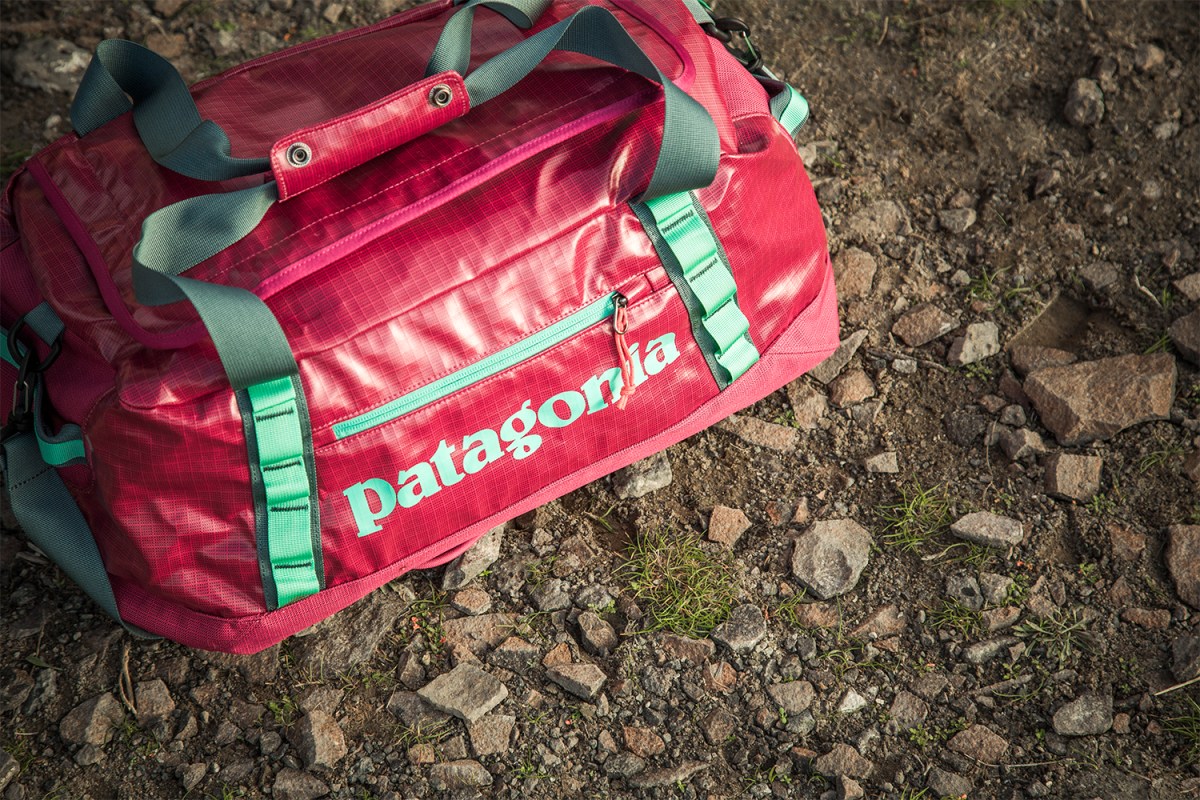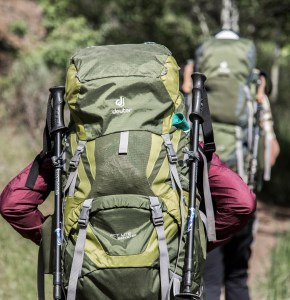Chances are, you already own plenty of sustainably made clothing and electronics built with rechargeable batteries instead of landfill-polluting alkaline—but your backpack probably doesn’t deserve a merit badge for environmentalism.
It’s not your fault. Packs have tended to lag behind other gear categories, where the outdoor industry has embraced sustainability and shoppers now routinely find organic cotton, fabrics made from recycled materials, safer chemical processes and recycling programs that breathe new life into discards. Technical backpacks, meanwhile, have generally continued to rely on energy-intensive materials and manufacturing methods that pollute the environment.

The REI Co-op Traverse packs now feature certified-recycled, bluesign-approved ripstop nylon.
Fortunately, the sustainability movement has been gaining traction among pack manufacturers, and more options are about to hit the market. In August 2019, Patagonia switched to 100 percent recycled fabric for its Black Hole bags and backpacks (which have achieved hero status thanks to their weather resistance and rugged, survive-anything construction). Eagle Creek now uses recycled PVB, a tough, water-resistant coating made from the laminate on car windshields, while the Traverse line of backpacking packs from REI Co-op now features certified-recycled, bluesign-approved ripstop nylon. Even Jansport’s ubiquitous daypacks (spotted on grade-schoolers from coast to coast) are now made from recycled polyester fabrics.
In January, Osprey will roll out the new Archeon line of backpacking and travel packs built from recycled materials and PFC-free durable water repellent (they will be available in a handful of REI stores and on rei.com). Osprey is also switching its kids’ packs and some daypacks to this new, certified-recycled material. Meanwhile, The North Face’s new North Dome pack will be made from 100 percent recycled polyester when it’s released next year. In fall 2020, Deuter will also debut daypacks made from recycled polyester, and Pacsafe has set a target to eliminate virgin (or brand-new) plastics from packs and totes by 2023.
“It’s amazing to see such an awakening among the larger brands, which are really getting behind this direction to make packs more sustainable,” says Austin Robbs, Patagonia’s director of equipment and accessories.
It took awhile to get here. “It used to be hard to get good-quality recycled materials that deliver the durability that consumers expect,” explains Marco Hühn, Deuter’s head of quality management and corporate responsibility. Over the past decade, as apparel brands shifted toward organically grown and recycled materials, pack manufacturers struggled to find supertough fabrics that stayed unscuffed as users dragged their load haulers up canyon walls or strapped them to the roof of overlanding SUVs.
Plus, pack construction requires more than just fabric, and that mosaic of foams, plastic framesheet, metal stays, buckles and webbing complicates sustainability, says Greg Gausewitz, product sustainability manager for REI Co-op. Furthermore, pack builders have no standard category-specific working groups to advise designers about the best materials. Apparel companies have been using the Higg Index for years to measure sustainability performance in the category, but that tool is only beginning to be used in equipment categories, says Jamie Marchbank, vice president of product for Eagle Creek and Jansport.

The Black Hole is now made with 100 percent recycled fabric.
But suppliers are now starting to offer the more sustainable fabrics pack designers have been asking for. This summer, Pacsafe launched six models made with Econyl, a recycled nylon created from discarded fishing nets that’s as durable as virgin material and can be infinitely recycled (most nylons lose strength when they’re melted and re-spun). And Eagle Creek’s new Caldera pack-and-luggage collection (available on rei.com in January 2020) is the first to use Cordura’s 100 percent post-consumer recycled fabrics. With ultrarugged, 610-denier ripstop and 1,200-denier polyester, these Corduras are bluesign-approved and use a totally PFC-free DWR finish.
In fact, several pack makers have resolved to ditch old-school DWR, which uses perfluorinated chemicals (PFCs), a large category of chemicals that resist breakdown in the groundwater and soil, for greener alternatives. The North Face recently eliminated PFCs from all its packs. Deuter will follow suit next year, and Osprey plans to hit that benchmark in 2022.
Switching to more sustainable materials makes a huge difference to a pack’s carbon footprint. “People think that shipping is the big contributor to climate change, but it actually tends to be quite small,” says Mark Galbraith, Osprey’s senior product line director. Instead, most of a pack’s environmental cost comes from the energy required to produce fibers and fabrics and the extraction and refinement of chemical treatments. So when manufacturers switch from virgin plastics to post-consumer recycled materials, says Galbraith, they can reduce their greenhouse-gas emissions by 50 percent.
Third-party certifications are important to ensure these gains, manufacturers say. “It’s hard for us to know and verify whether all the factories involved in the supply chain are truly following sustainable practices for dyes and yarns and coatings,” Hühn says. Since 2008, Deuter has relied on bluesign to evaluate and approve materials and processes. REI Co-op’s Traverse, Flash, Trail and Trail Hydro models all use bluesign-approved fabrics. Osprey has also adopted bluesign protocols, and uses materials that are certified by the Global Recycling Standard (GRS). By choosing packs that use certified sustainability traits, consumers can feel confident that these products’ environmental cred has been verified by experts.
Manufacturers are also reducing packs’ environmental costs by keeping them in use for as long as possible—which often means repairing products instead of replacing them. Eagle Creek says it repairs 90 percent of its warranty claims and returns them to consumers within five days. Packs that can’t be mended are stripped of parts that can be reused: By weight, 40 percent of each discarded pack gets upcycled.

Deuter has a great repair program.
For nearly 20 years, Deuter has also operated a similar repair program, while Patagonia has similar policies in place. Osprey launched its All Mighty Guarantee and repair initiative in 2009 and is now looking to partner with Renewal Workshop, a recycler that strips irreparable gear to make new product.
Such longevity concerns are inspiring designers to consider how they build packs in the first place. Eagle Creek now strives to make packs that are field-repairable to reduce the energy costs involved with shipping bulky products across the globe. REI Co-op is working to use more standardized parts across various pack models, so that replacing a buckle becomes a simple swap. The co-op’s designers are also avoiding gimmicky features in favor of classic aesthetics that won’t look dated after five, 10 or even 20 years in the field.
Gausewitz says that REI is also in the process of ramping up its gear rentals and used-gear programs so that occasional hikers have more options for borrowing a pack or buying a used one instead of being forced to buy new.
“Ideally, all product would be recycled at the end of its life,” he says. “We’d grind it up, melt it down and make another. That’s the ideal.” But packs aren’t there yet. “They’re too complex, and the infrastructure to recycle them at scale doesn’t exist.” So for now, REI Co-op and the brands it sells are focused on minimizing the impact of manufacturing packs and keeping each one in use for as long as possible.
“Frankly,” Gausewitz says, “we’re trying to give people options beyond always having to buy new when they want a pack.”


